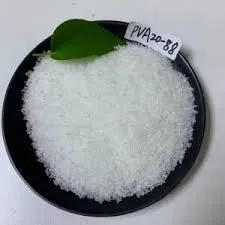Thickeners in Liquid Soap A Comprehensive Guide
Liquid soap has gained immense popularity in recent years, not only for its cleanliness but also for its versatility. However, achieving the desired viscosity can sometimes pose a challenge. Thickeners play a crucial role in the formulation of liquid soap, as they help achieve the right consistency while improving the overall performance of the product.
Understanding Thickeners
Thickeners are substances that can increase the viscosity of a liquid without substantially altering its other properties. In liquid soap, thickeners can serve multiple purposes, including enhancing texture, stability, and ease of use. They can be natural, synthetic, or semi-synthetic, each with unique characteristics that suit various formulations.
Types of Thickeners
1. Natural Thickeners Derived from natural sources, these thickeners are gaining popularity among consumers seeking eco-friendly products. Common examples include xanthan gum, guar gum, and carrageenan. These thickeners not only enhance viscosity but also have emulsifying properties that can improve the stability of liquid soap formulations.
2. Synthetic Thickeners These are chemically formulated substances designed to thicken liquids. Common examples include polyacrylate and polyethylene glycol derivatives. While synthetic thickeners can provide more substantial viscosity and clarity, some consumers prefer to avoid them due to concerns about possible skin sensitivities.
3. Semi-Synthetic Thickeners These are chemically modified natural polymers. Methylcellulose and hydroxyethyl cellulose are two examples that offer a balance between effectiveness and natural origin. They are widely used in cosmetic and personal care formulations due to their ability to create stable and smooth textures.
How Thickeners Affect Liquid Soap
thickeners liquid soap

The choice of thickener can significantly influence the performance of liquid soap. Thickeners impact not only viscosity but also the soap’s foaming ability, stability, and skin feel. For instance, xanthan gum imparts a more gel-like texture, which can enhance the sensory experience during use, whereas other thickeners might produce a more fluid, easily spreadable product.
Moreover, the use of thickeners can affect the product's pH and overall stability. Adjusting the formulation to accommodate a specific thickener often requires careful consideration of other ingredients, such as surfactants and preservatives, to maintain a balanced product.
Formulating with Thickeners
When formulating liquid soap, it’s essential to understand the interaction between thickeners and other ingredients. The process typically involves
1. Choosing the Right Thickener Based on desired viscosity, compatibility, and consumer preferences. 2. Testing Conducting various trials to determine how the thickener interacts with the soap base, surfactants, and other additives.
3. Adjustment Fine-tuning the concentration of the thickener to achieve the optimal texture.
4. Stability Testing Assessing the final product’s stability over time to ensure it maintains its quality.
Conclusion
Thickeners are indispensable in the creation of liquid soap, contributing not only to the desired viscosity but also enhancing the product’s overall performance. Whether using natural, synthetic, or semi-synthetic options, understanding their properties and effects is crucial for formulators. As consumer demand for quality and eco-friendly products continues to rise, the role of thickeners in liquid soap formulation will remain vital, paving the way for innovative and effective cleansing solutions. With focused experimentation and careful selection, manufacturers can create liquid soaps that not only clean effectively but also provide a luxurious experience for users.
-
The Application and Significance of Construction RdpNewsMay.19,2025
-
Industrial Grade HpmcNewsMay.19,2025
-
Building Coating Adhesive Building Coating Adhesive HpmcNewsMay.19,2025
-
Application Of Hpmc For Detergent For Detergent In DetergentsNewsMay.19,2025
-
Application Of Hpmc Cellulose In Cement-Based MaterialsNewsMay.19,2025
-
Application Of High Quality Hpmc For Construction In The Field Of ConstructionNewsMay.19,2025




